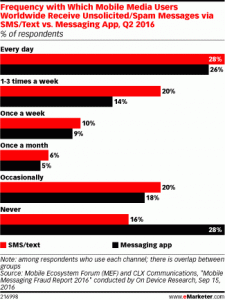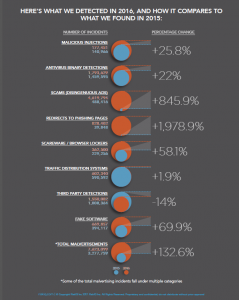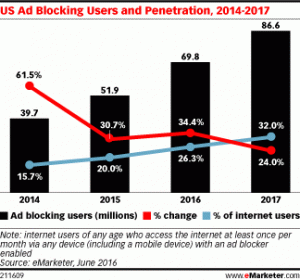132%. That’s the increase in the instances of malvertising reported across digital landscape in 2016 compared to the preceding year. RiskIQ, a leading online risk monitoring and threat management SaaS provider, has released its latest annual malware detection data card titled, “2016 Malvertising Report”. The report squarely links the ascent of programmatic advertising capabilities to growing number of ad blocker users.
Malicious advertising in digital parlance is referred to as “malvertising” (a portmanteau derived from “malicious advertising). According to online threat management companies, malvertising campaigns are growing in number, proving to be a scarier alias of the “Fake News” events. Following closely the rise of malvertising in the last couple of years, RiskIQ identified programmatic profiling aspects that “malevolent” advertisers leverage to target precise user groups via an array of techniques.
Why advertisers resort to programmatic malvertising? Well, the vicious practice offers a huge ROI for its practitioners by virtue of its highly targeted operations. On top of it, targeted user groups have no viable threat management tool to detect and mitigate programmatic malvertising or any malvertising for that matter! Threat actors – the practitioners of malvertising use high-traffic ad networks like Google, Facebook and YouTube to spike users with malware, ransomware, and scams. Some even con victims using redirects and phishing pages.

“Malvertising is so nefarious because it’s a direct attack on the lifeblood of the internet as we know it. Digital media marketing is what funds the ‘free’ websites we all know and enjoy online. The success of the internet and all the people that rely on it is inextricably linked to online advertising success and safety,” said James Pleger, threat researcher at RiskIQ.
“Publishers, ad platforms, and ad operations teams need active visibility, forensic information, and mitigation capability to enable them to effectively detect and respond to malicious ads in the wild,” he added.
According to the report, disingenuous advertisements and redirects to the phishing page have registered highest growth between 2015 and 2016. Surprisingly, third-party malvertising detections fell by 14% in 2016.

“Malvertising threatens this online marketing growth,” James said. “For example, users wary of malvertising will block all ads, hampering the success of the digital advertising industry. By the end of 2017, more than 86 million people are expected to use ad blockers.”
According to eMarketer, the stakes are growing bigger in ad tech security and threat management. For an industry that is expected to touch $670 billion in 2020, programmatic advertising fraud pose a definitive challenge that can derail any omnichannel campaign. Increasing number of online customers in the US are embracing ad blockers to keep disturbing promotions at bay, threat actors will continue to use promotional malvertising to poach customers. Ad blocker users in the US are projected to rise by 24% in 2017 compared to the previous year.

Many questions arise from the report’s findings. Ad publishers should be interested in one — Will programmatic advertising turn into a vicious technology without self-regulation in ad tech?











